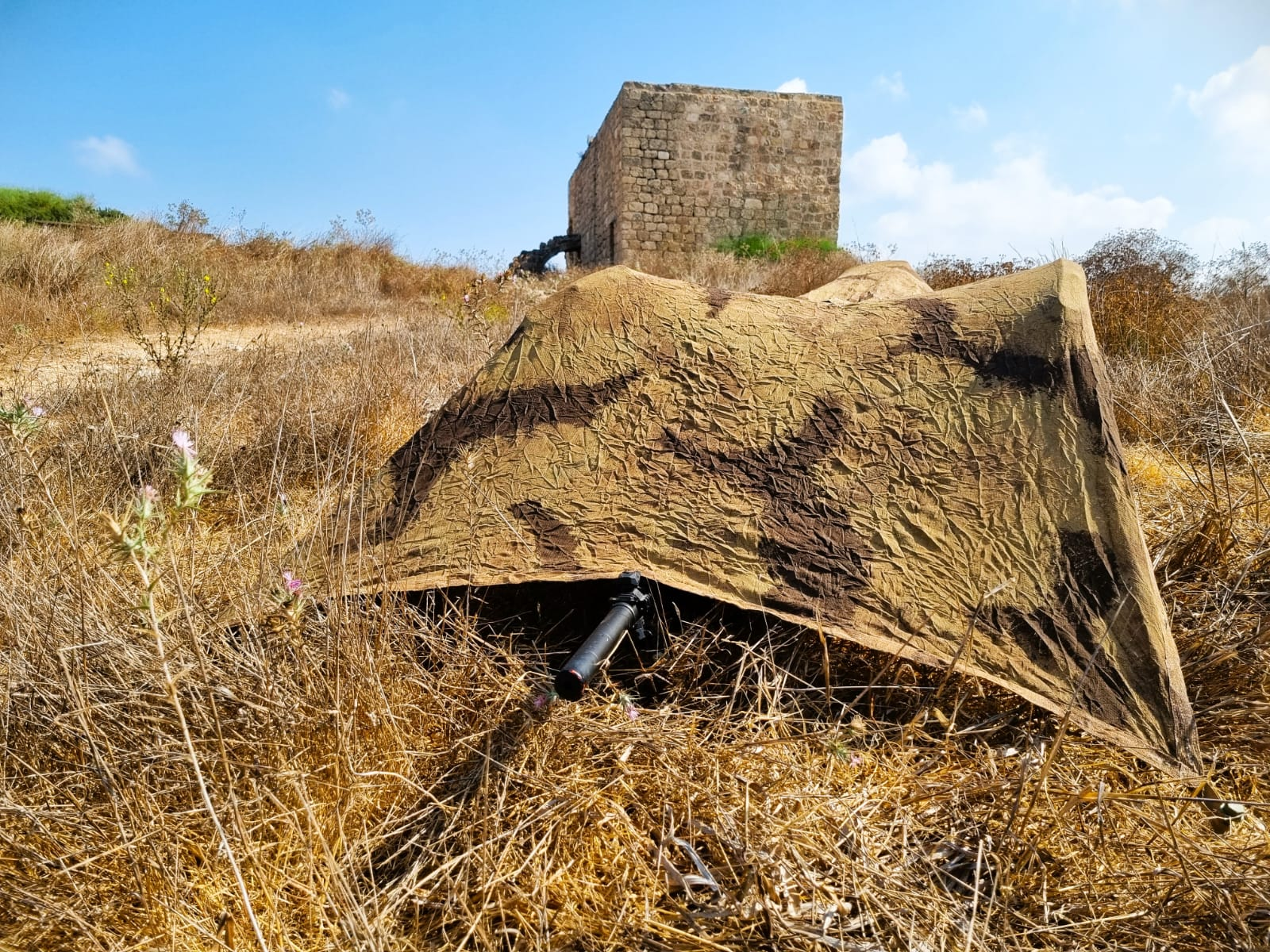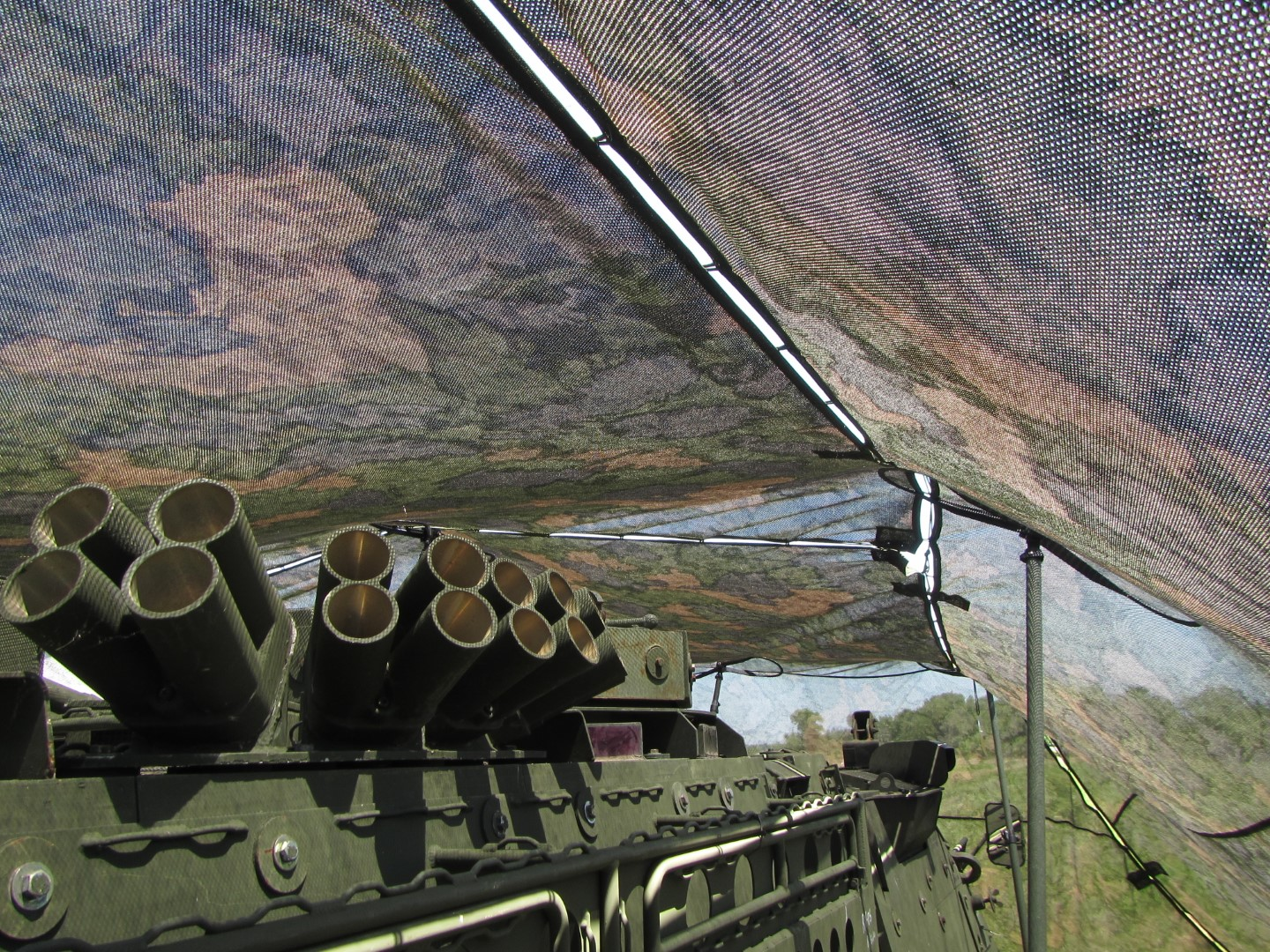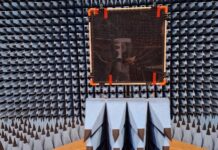Concealment is critical to survivability, but hiding effectively on the battlefield, whether troops or vehicles, day or night, is no longer as clear-cut as it once was.

Credit: Fibrotex
Hiding from the enemy and staying out of sight with the help of good camouflage is a basic requirement for survival in war. Using natural, or local cover along with standard camouflage netting, has long been standard practice to conceal troops, vehicles, armour and more; tree branches and local foliage in a wood, long grass for personal camouflage in open grassland, hay bales and white plastic sheeting to cover armoured vehicles in a farm setting. You get the picture. The aim is to blend in as well as possible with the immediate landscape and surroundings, also by modifying those surroundings, so they, too, appear similar to assets being hidden; painting disruptive patterns on a temporary installation, using dummy or decoy assets to draw the enemy’s gaze away from the real thing – it’s all straightforward, basic, camouflage-and-concealment practice. Today’s battlespace, however, is anything but straightforward.
In today’s sensor-heavy environment, it’s harder than ever for warfighters to hide from enemy observation and surveillance, no matter how good their disguise, or hiding place. It seems that basic skills of camouflage and concealment, through lack of practice and a focus on non-peer-to-peer conflicts, have been lost since the end of the Cold War. It is the recent advances in sensor technologies, which can now ‘see’ in the dark, through obscurants, fog, almost everything, and even the prospects of detection – which typically result in destruction – that have made effective concealment in today’s battlespace extremely challenging. That said, the basic skills remain absolutely essential and the good news is that technologies are available to improve the chances of remaining undetected by an enemy.
This article takes a brief look at camouflage and concealment through some of its basic principles, challenges faced and relevant experiences from the battlefields of Ukraine, then to some latest technologies and advanced concealment solutions, which can improve the chances of survival against today’s threats.
New threats in the field
Staying hidden means staying alive in Ukraine for soldiers on both sides of the conflict, as a great many videos posted online have shown, particularly with the use of new-era, overhead threats. unmanned aerial vehicles (UAVs), loitering munitions, and first-person-view (FPV) drones used by both sides have changed the face of warfare, and hiding from these menacing aerial dangers has become a major survival issue for both sides. For instance, Russia’s use of drones at night above Kyiv, Bakhmut, and other areas along the front started to threaten Ukrainian forces in late 2023, with fresh and more frequent attacks during the night. Since then, their numbers have only grown. Ukrainian forces found that no matter how still, or how well camouflaged they were, whether under netting and foliage, they were still at risk of detection by drones. Drones for night use can be equipped with various sensing equipment, including low-light cameras, image intensifier tubes, and thermal imaging (TI) cameras. These all enable their users to pose a threat to enemy night-time activities, such as logistics and re-supply, as well as reconnaissance, fighting patrols, and more. They have even been reported as being more deadly and accurate than artillery.
Among these, TI cameras pose a particularly noteworthy threat. The problem? Heat signatures. Whether personnel, vehicles with warm engines, or other heat-emanating scenarios/emplacements, maybe camouflaged well by day, but in the dark they light up like a Christmas tree for any TI sensors to see.

Credit: Fibrotex
To adapt and counter this threat has been difficult, but Ukrainian troops have learned to consciously consider every single move they make at night, no matter how small. They have changed routines too, undertaking tasks, which had previously been conducted in total darkness, such as logistics and re-supply, so these are now handled during grey periods – twilight, or pre-dawn – the hardest times of the diurnal cycle in which to discern any object clearly. Nothing, however, has been totally effective for the Ukrainians, so a mix of traditional camouflage and the use of their own low-light, image intensifier, and TI devices to help detect these overhead threats, is pretty much the current approach, although this can have its drawbacks with device battery-life limitations, together with restricted fields of view, and fatigue.
Thermal camouflage conundrum
In the spring of 2023, Ukrainian press and international media reported that Russian troops were using thermal-camouflage-covered garments, such as ponchos and other coverings, to hide themselves on the battlefield, including from night aerial attacks by drone-dropped grenades. A ‘cloak of invisibility’ they called it. Russian soldiers had been told they couldn’t be seen, that their heat signatures would be obscured, and that they’d be safe. The Russians proclaimed this as something of a breakthrough, even the tech has been around for many years. Certainly, showing very low emissions on the IR spectrum, the Russian textile did suppress heat signatures, trapping body warmth within the synthetic middle of a multi-layered fabric and preventing it from escaping. However, in some cases, the textile has been overly-effective at its job so, as a result, it actually appeared colder to TI and IR sensors than its surroundings, with those sheltering underneath, appearing as darker cold spots, discernible to overhead drones, and not entirely blending in with the local environment. Many users, trusting what they’d been told – that they could not be seen – were totally unaware that they could in fact be seen by Ukrainian drone-mounted IR cameras. While this has not been the case for every instance, with some Russian cloaks appearing to effectively hide the user, their performance would seem to be variable. This may be as a result of different models, or batches, or operating conditions.
Interestingly, the Ukrainians themselves announced their own thermal camouflage in October 2023, an ‘invisible shield’, as they called it and a ‘breakthrough in thermal camouflage technology’. Again, the textile is said to ‘obstruct heat radiation’ and acts as a counter against Russian drones equipped with TI cameras. How the Ukrainian product has proven itself since introduction is thus far unclear.
Effective multi-spectral camouflage
Beyond Ukraine, there are many similar thermal camouflage technologies, in use with leading militaries. One such solution for specialist individual operatives is the Noa personal modular camouflage system from Israeli company, Fibrotex. With Noa, the lightweight textile provides multi-spectral camouflage, offering forward observers, snipers and others the use of either a single poncho, or linking several together to cover more people or emplacements. This is just one of the specialist company’s individual solutions. Of its static cover portfolio for the likes of vehicles, command posts, and aircraft, its ultra-lightweight camouflage net system (ULCANS) is a prime example. Indeed, ULCANS Increment I, has been adopted by the US Army to provide ‘critical camouflage and concealment capabilities’ for assets in static locations, under a ten-year contract valued at USD 480 million.

Credit: Fibrotex
The net system – more of a tarpaulin than a net – is a reversible, all-weather, multi-spectral, modular camouflage system that hinders detection by devices, which rely on visual, ultraviolet (UV), near-IR (NIR), short-wave IR (SWIR), medium-wave IR (MWIR), long-wave IR (LWIR), and radar, and fits applications protecting static vehicles, weapons systems, tactical operation centres, military containerised shelters, and more. Its multi-spectral capabilities come from the material properties of the textile.
Another multi-spectral approach has been the focus of UK defence company, Qinetiq, but this time offering a range of solutions for vehicle platforms to decrease their acoustic visual, thermal, and radar signatures. Examples include the use of insulating paints and appliqués to lower visual and thermal signatures. So, for instance, if a part of the vehicle becomes hot when it needs to look cold, the paint or appliqué material will keep it looking colder; a bespoke paint can also help reduce the sun glinting off metal. For radar signature reduction, solutions include shaping of the exterior surfaces of a vehicle and coating the platform with radar-absorbing treatments. Qinetiq’s acoustic signature reduction offers includes solutions to dampen noise from the engine, exhaust, and track-noise reduction solutions.
Closing thoughts
The art of camouflage and concealment and its basic principles remain relevant to every warfighter and are crucial for survival in a modern operational environment. New threats, particularly those from UAVs equipped with modern thermal cameras, make attempts at concealment that much harder, though with the effective use of new technology alongside traditional skills, not impossible. By combining those old, proven ways with the likes of latest camouflage systems, troops stand a much better chance of making it through the day or night. Remember, once detected, survival becomes a matter of time.
Tim Guest






